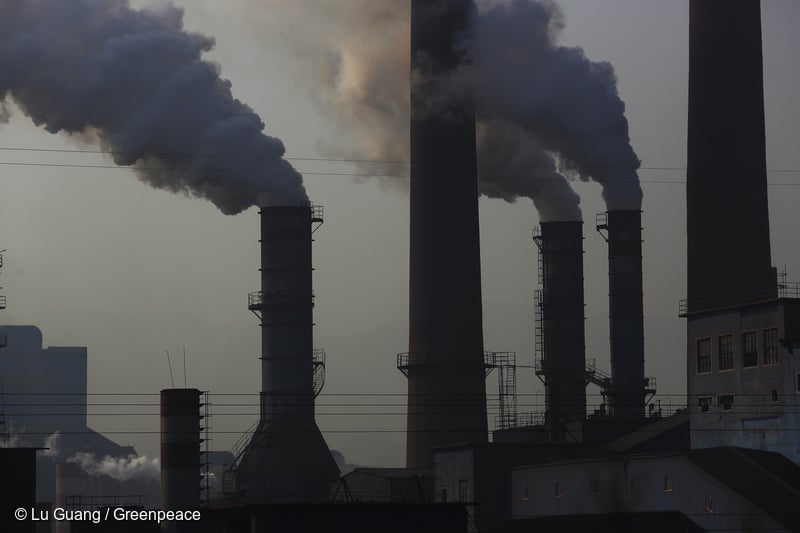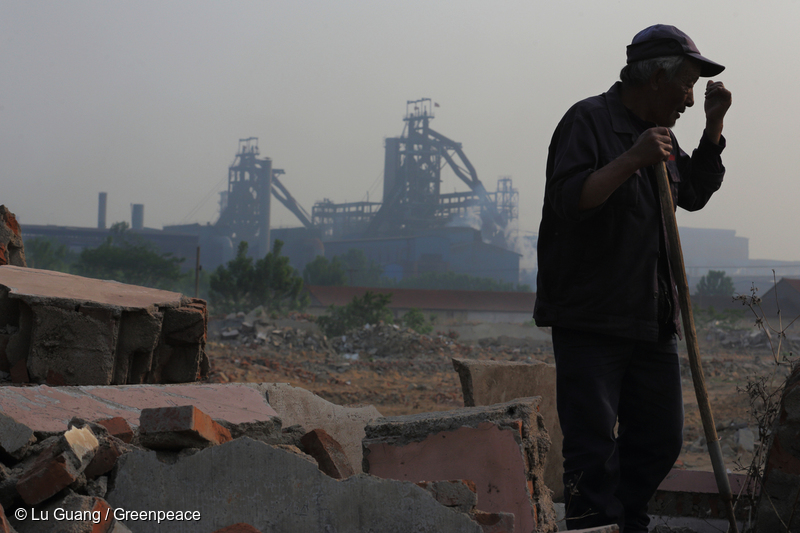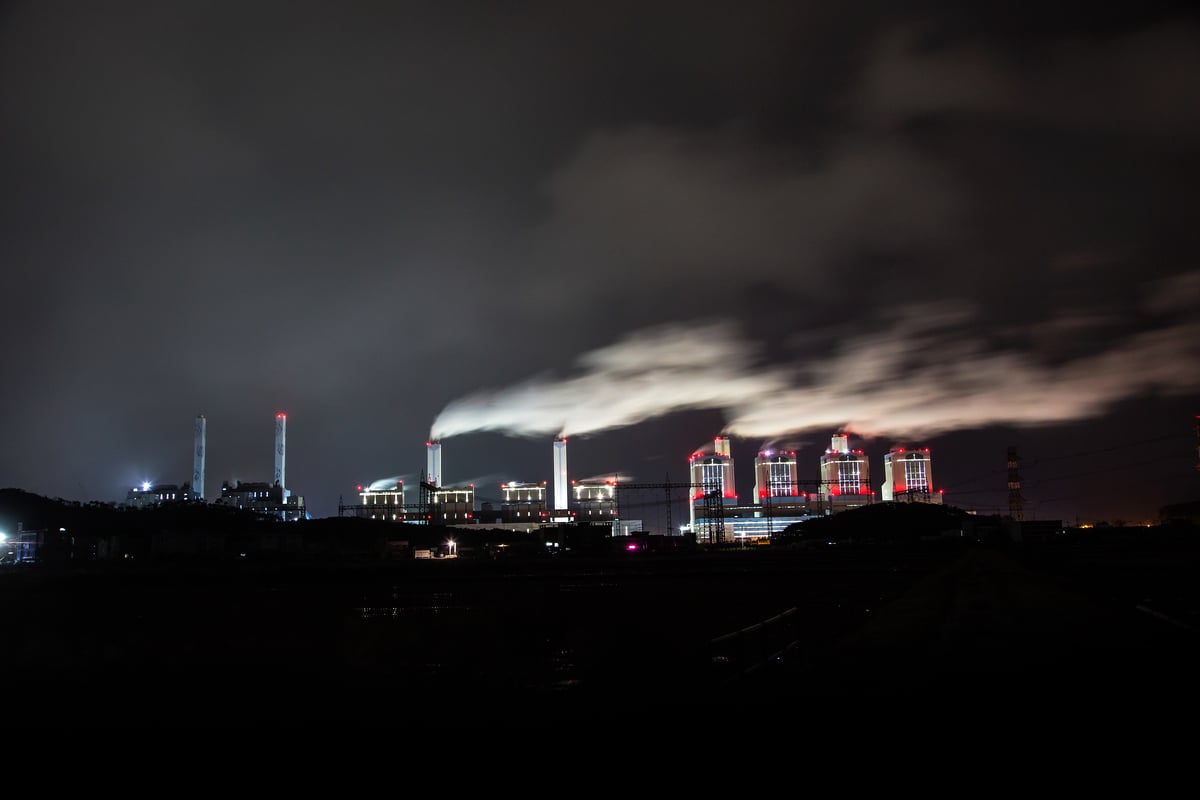High-emission industries that don’t meet green finance requirements need help transitioning, too.
There’s no shortage of reasons for China’s steel industry to decarbonize, as climate change intensifies, Beijing’s net zero deadline looms, and Europe’s Carbon Border Adjustment Mechanism (CBAM) threatens a sizable chunk of Chinese steelmakers’ market.
But there are challenges. Decarbonization requires investment. And steelmakers work at margins that make transition challenging. While green finance is usually the vehicle to realize favorable financing rates that facilitate green industries’ development, it is not designed for high-emissions industries like steelmaking, and does not cover its needs. Although steel is not a low-hanging fruit in China’s energy transition, its decarbonization is nonetheless critically important.
The “Special Action Plan for Energy Conservation and Carbon Reduction in the Steel Industry” issued in May 2024 defines targets for China’s steel industry in 2025, including increasing production from electric furnaces to 15% of total crude steel output, hitting a 30% energy efficiency benchmark across all capacity, and cutting carbon dioxide emissions by approximately 53 million tons from 2024 to 2025.
The European Union’s CBAM begins implementation in 2026, and emissions-related taxes could potentially increase costs in this market by 4% to 6%, equating to annual carbon tariff payments estimated between $200 million USD and $400 million.
But steelmakers currently lack the profit margins to invest in the necessary changes to move forward on decarbonization. In 2024, the average net profit margin for steel enterprises was 0.71%, which was a year-on-year decrease of 0.63%, according to the China Iron and Steel Association.

Transition finance is a more appropriate financing vehicle, addressing the broader needs of industries with high-emissions, pollution, and high-electricity consumption. Transition finance helps these sectors manage the funding gap and facilitate industrial emission reduction and efficiency optimization. But transition finance remains relatively new and its development is uneven and not yet unified, and would benefit from a unified national standard to provide an authoritative framework.
As of the beginning of 2025, China issued 22 different regional standards and guidelines. Internationally, the Climate Bonds Initiative and international banks like Standard Chartered have their own proprietary standards. This web of disparate definitions without one prevailing standard creates issues in compatibility and comparability, increasing the cost for banks to identify appropriate projects and activities and overall increasing the risk of “greenwashing” and “fake transition.”
Critically, there is also a lack of strong incentive mechanisms, such as fiscal subsidies and carbon emissions reduction support tools from the central bank. This makes the financing costs of transition finance significantly higher than those of green finance.. As a result, only relatively large enterprises are making small-scale attempts at transition finance financing.. Transition bonds, for example, are currently issued primarily by state-owned enterprises with higher credit ratings, and participation from private and foreign enterprises is limited.
Meanwhile, for steelmakers, the lack of a definitive standard makes it difficult to establish clear transition objectives and pathways. A 2022 survey of 218 enterprises in China by PricewaterhouseCoopers and the United Nations Development Program found that only 30.3% had set explicit carbon emissions targets.
And finally, transition finance still lacks a diversity of financing tools. It is dominated by debt financing, with a notable absence of equity financing tools, posing particular risks for small- and medium-size enterprises by elevating debt-to-equity ratios and increasing the cost of debt financing. Overall the scale of transition finance lags far behind green finance. By the end of 2024, the cumulative issuance of green bonds reached ¥4.16 trillion RMB, while transition bonds only accounted for only ¥215.42 billion RMB, around 5.18% of the green bond total. This discrepancy in green finance and transition finance is at odds with the reality of China’s low-carbon transition, with about 90% of national GDP being industries that are not purely “green” and which would require transition finance.

To resolve these challenges, transition finance would need the publication of national standards. And given the ambitious timeline to meet steelmakers’ decarbonization targets, the industry needs national standards urgently. The development of national transition standards would need to be collaborative, involving government agencies, businesses, and banks. More innovative equity- and insurance-related financial instruments should be introduced into the transition finance toolkit to provide optimized financing solutions for corporate transition. And incorporating carbon performance-related incentives will be necessary to enhance innovation of transition finance. At the same time, banks need to actively develop transition finance, study transition standards and technologies, and mitigate risk from greenwashing and fake transition through risk management including auditing. Businesses should actively explore technological pathways for transition, optimizing the use of transition funds. Overall, monetary and fiscal policies must work in tandem to help reduce the cost of low-carbon transition.
ENDS
For media enquiries please contact:
Qilin Liu, Greenpeace East Asia, Beijing, ([email protected])
Greenpeace International Press Desk, [email protected], +31 20 718 2470 (24 hours)



